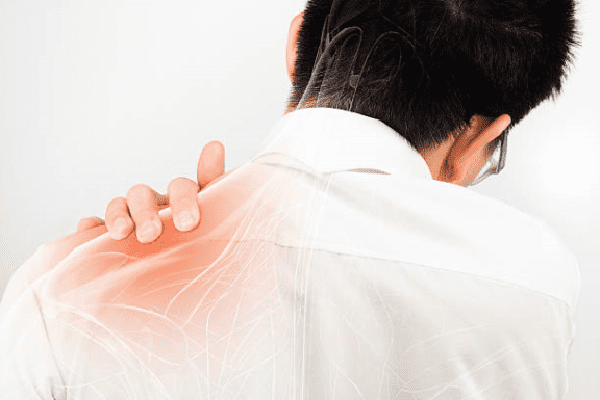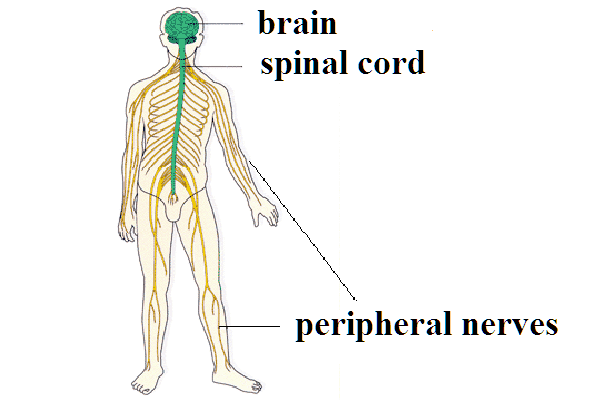Neurological diseases >>>> Neuropathy
Neuropathy.


The spinal section of the human nervous system is formed by a group of elements: anterior and posterior spinal roots, spinal nerves, nerve nodes, nerve plexuses, peripheral nerves and their branches. A different kind of damage to each of the groups of these elements leads to a certain disease:
- If the anterior and posterior spinal roots are affected, then they speak of radiculopathy (radiculitis);
- When the nerve plexus is affected, then we are talking about plexopathy (plexitis);
- Damage to the trunk of the peripheral nerve and its branches is called neuropathy (synonym: neuropathy);
- When it comes to multiple symmetric lesions of the distal peripheral nerves, such conditions are called polyneuropathies (polyneuropathies).
The characteristic signs of neuropathy are:
- Sensory impairment in the area innervated by the affected nerve;
- There is a clear pain or soreness of tissues, muscles at the site of the nerve injury;
- Pain often radiates along the nerve to different parts of the body, innervated by this nerve;
- There may be paresis or paralysis of those muscles that "serve" the affected nerve.
The causes of neuropathy are quite varied:
- Compression (compression of a nerve) as a result of trauma, tumor development;
- Mechanical damage to the nerve (trauma);
- Nerve ischemia;
- Metabolic disorders;
- Various types of intoxication caused by infectious agents, chemicals, drugs;
- Avitaminosis (in particular, a lack of B vitamins and folic acid);
- Various diseases with endocrine disorders (diabetes mellitus, hypothyroidism, amyloidosis), rheumatic diseases (polyarthritis, rheumatoid arthritis), tumors, hepatic or renal failure, infectious diseases (tuberculosis and others).
Depending on the cause of the neuropathy, the following neuropathies are distinguished :
- Diabetic neuropathy is common and is caused by the destruction of neurons due to the instability of blood glucose levels.
- Post-traumatic neuropathy occurs as a result of compression, surgery, mechanical trauma to the peripheral nerve and its branches. Most often, the sciatic or radial nerves, ulnar nerve, nerves of the lower extremities are involved in this process.
- Ischemic neuropathy , which is a consequence of a violation of the blood supply to nerves (for example, the optic nerve).
- Alcoholic neuropathy develops with the abuse of alcoholic beverages, which impede the absorption of certain vitamins, which leads to vitamin deficiencies.
Depending on the nature of nerve damage and clinical manifestations, they are distinguished:
- Peripheral neuropathy , which develops as a result of impaired transmission of impulses from the central nervous system to organs innervated by these peripheral nerves. Sensitivity is lost, muscle weakness appears, impaired coordination of movements, convulsions, tics.
- Sensory neuropathy , in which the sensitivity of the organ is disturbed, there is no sensation of pain, there is numbness and tingling, phantom pains (non-existent).
- Motor neuropathy , which is characterized by impaired motor functions, but sensitivity does not change. With such neuropathy, part of the muscle reflexes is lost, muscle weakness, uncontrolled movements appear.
- Autonomic neuropathy , in which the innervation of internal organs is disturbed, which can lead to disorders of urination, defecation, swallowing, causes arrhythmias and many other functional disorders that a person does not control.
Treatment of neuropathy should be carried out taking into account the degree of damage to the peripheral nerves, their location, the patient's age and the causes of neuropathy.
Treatment for neuropathy is a series of steps:
- to eliminate compression, infringement and other compression of the nerve,
- removal of the inflammatory process,
- reduction of pain syndrome,
- restoration of the functions of the affected nerve (including its blood supply and metabolism),
- stimulation of regenerative processes and restoration of pathways for the passage of a nerve impulse,
- treatment of diseases that have caused nerve damage,
- prevention of recurrence of neuropathy of one nature or another.
In the treatment of neuropathy, physiotherapy is used (laser therapy, electropuncture, electrophoresis and other methods), manual therapy, acupuncture.
In difficult cases, surgical intervention is required to eliminate the compression effect (neurolysis surgery, tumor removal, hernia removal).
There are methods of conservative therapy: splinting with an orthosis or splint; taking drugs that improve tissue trophism, regeneration; taking non-steroidal anti-inflammatory drugs and vitamin therapy with group B drugs.

Read

Read


























